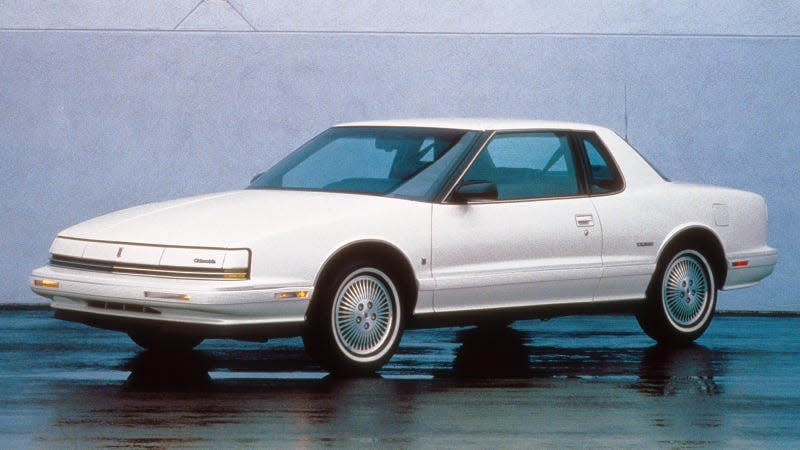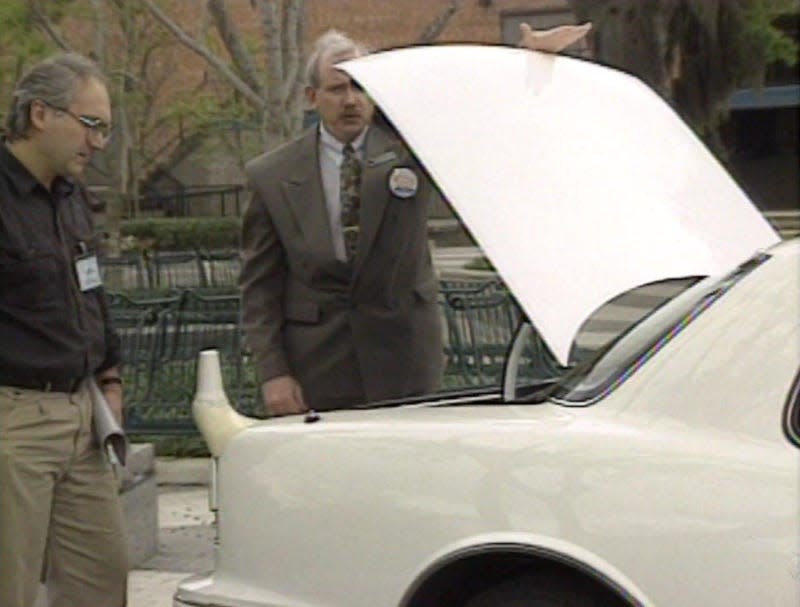The Earliest Touchscreen Nav System Began With 100 Oldsmobile Toronados in Florida

When did you get your first GPS or car with built-in navigation? I vaguely recall my dad getting a Garmin standalone unit for Christmas around 2007. A few years later, smartphones would make the feature ubiquitous.
But the history of navigation in cars actually stretches back decades before that, and the earliest attempts didn’t even rely on computers or LCD screens for the service. About 10 years after Honda’s Electro Gyrocator introduced Japanese drivers to the feature, GM tested a system we’d recognize as a more traditional navigation system in a partnership with Avis, in modified Oldsmobile Toronados offered for rental in the Orlando area. It was called TravTek, and it’s both super impressive and kind of hilarious.
Read more
TravTek emerged on the scene in 1992, and was built into 100 Toronados — 75 of them reserved for Avis’ fleet and the remainder loaned to “high-mileage local drivers,” according to IEEE Explore. The Federal Highway Administration and Florida Department of Transportation were in on this too, so you’d figure they’d want all the data they could get their hands on.
An onboard computer installed in the trunk enabled navigation, and it was routed to a 6-inch touchscreen with synthesized speech to call out turns and directions. It’s very Microsoft Sam, very WarGames, and yet it’s actually pretty adept at telling you everything you need to know, so long as you can understand its stilted, garbled delivery. This short news segment from a 1992 episode of Motoring TV demoes the process of setting a destination:
Credit: Motoring TV via YouTube
It’s not terribly unlike modern systems, except TravTek didn’t allow you to type in addresses. Instead, you had to select from a list of preselected streets, all in a 1,200 square-mile zone in Central Florida. Still, within that chunk of the Sunshine State, TravTek was imbued with a wealth of knowledge beyond maps alone. As OutrightOlds explains:
Data from traffic signals, highway surveillance cameras along the roads, emergency vehicles, construction reports and other TravTek cars were fed into the computer continuously from a AAA traffic management center in Orlando. Traffic information and rerouting, did not become widely available on modern vehicles until the development of XM Nav Traffic, an RDS-based terrestrial system, in 2004.
Vehicle location was pinpointed using a built-in magnetic compass, sensors in the car’s wheels that measured distance traveled and a satellite that feed its signal to a large antenna on the rear deck lid.
Interestingly, TravTek couldn’t rely on GPS alone to pinpoint the vehicle’s location, so the additional wheel sensors and compass must have been necessary to fill in any gaps in data. By the way, “large” is an understated way of describing that decklid antenna. Here’s a good view of it jutting out prominently above the passenger-side taillight:

What it enabled, though, must have seemed pretty unbelievable 30 years ago. Points of interest, like hotels, were preloaded in the system. You had access not only to a hotel’s name and address, but also its rating, per AAA, and useful information like whether it allowed smoking or pets, or had a pool. You could even dial the front desk right from the screen — though hands-free, in-cabin speakerphones were still a ways out. You had to pick up a good, old-fashioned car phone receiver for all your queries.
When it came time to hit the road, you could choose your preference for the fastest route, or one that avoided toll roads or interstates, just like you still can in Google Maps. For a more in-depth idea of how TravTek worked in practice, check out this longer report that aired in Australia’s Beyond 2000 docuseries:
Credit: R D via Youtube
Thus far we haven’t discussed TravTek’s limitations much, and being 30 years old, you can imagine it had a few. One becomes clear at the 3:27 mark in the above video. The driver makes a mistake — turning right instead of bearing right — and finds herself astray of TravTek’s intended route.
Modern GPS systems would automatically redirect you in seconds, but with TravTek, you had to initiate that process by pressing a button on the steering wheel marked “New Route.” Anticipating that users might panic in these moments, TravTek recommended you press an on-screen button labeled “Help” when you lost your way. That would connect you over the phone with support personnel at AAA, who had a view into your vehicle’s data and could walk you through the rerouting process.
No, none of this was perfect. But for 1992 it was a very promising start, and GM hoped to commercialize the service in the next few years. When it did hit the market in time for the 1995 model year, the system was called Guidestar, and could be optioned on the Eighty Eight, LSS and Bravada for $2,000.
Guidestar’s GPS covered up to 17 states, but wasn’t quite as feature complete as TravTek’s implementation. It lacked a touchscreen and live traffic updates, for example, and took the form of a standalone unit that was mounted outside the dash. In that way it was more like the precursor to a Garmin or TomTom unit than the built-in nav systems that would begin to proliferate in the mid-2000s — although it still required a computer in the trunk for all its processing. How far we’ve come, indeed.
More from Jalopnik
Sign up for Jalopnik's Newsletter. For the latest news, Facebook, Twitter and Instagram.

 Yahoo Autos
Yahoo Autos 